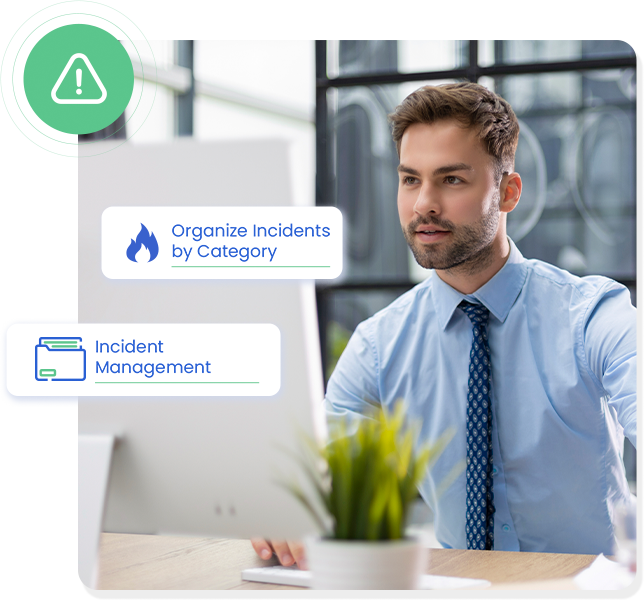In today’s fast-paced and heavily regulated business environment, managing risks and staying compliant with evolving laws, regulations, and internal policies can be a complex and time-consuming task. One of the key tools for managing risk is a risk register—a structured document or system that helps organizations identify, assess, and track risks over time. However, traditional risk registers, often managed manually through spreadsheets or paper-based systems, are prone to errors, delays, and inefficiencies.

Automated risk registers offer a solution to these challenges by leveraging technology to streamline the risk management and compliance process. By automating risk tracking, reporting, and analysis, businesses can improve their ability to mitigate risks, ensure compliance, and make data-driven decisions.
This article explores the benefits of automated risk registers, how they enhance the compliance process, and why they are becoming an essential tool for businesses across industries.
1. What Is a Risk Register?
A risk register is a tool used by organizations to document potential risks that could affect business operations, objectives, or compliance with regulations. It typically includes detailed information about each risk, such as the likelihood of occurrence, potential impact, assigned risk owners, and mitigation strategies.
Key Components of a Risk Register:
- Risk Description: A clear explanation of the risk, including what could go wrong and its potential effects on the organization.
- Risk Owner: The person or team responsible for monitoring and managing the risk.
- Likelihood and Impact: An assessment of how likely the risk is to occur and the severity of its impact if it does.
- Mitigation Strategies: Actions and controls in place to reduce the likelihood or impact of the risk.
- Status and Progress: Information about the current status of the risk, including any changes in its likelihood or impact over time.
Risk registers are commonly used in industries that face strict regulatory requirements, such as finance, healthcare, energy, and manufacturing, but they are applicable to any organization that needs to manage risks proactively.
2. Challenges of Traditional Risk Registers
Traditional risk registers, often managed manually, can present several challenges that hinder effective risk management and compliance efforts. These challenges include:
1. Inefficiency and Errors
Manually tracking and updating risks using spreadsheets or paper-based systems is time-consuming and prone to errors. It can be difficult to ensure that risk data is accurate, up-to-date, and accessible to all relevant stakeholders.
2. Lack of Real-Time Visibility
In a manual system, risk data is often updated periodically, which can lead to delays in identifying emerging risks or changes in existing risks. This lack of real-time visibility can make it harder for organizations to respond quickly to new threats.
3. Difficulty in Managing Complex Risks
For large organizations or those operating in highly regulated industries, the number of risks that need to be tracked can be overwhelming. Manually managing hundreds or thousands of risks can result in important risks being overlooked or not receiving sufficient attention.
4. Limited Collaboration
Risk management is a cross-functional process that often involves multiple teams, departments, and stakeholders. Traditional risk registers can make it difficult to facilitate collaboration and ensure that all relevant parties are aware of their roles in mitigating risks.
3. What Are Automated Risk Registers?

Automated risk registers are digital tools or software solutions designed to automate the process of identifying, assessing, tracking, and mitigating risks. These platforms allow organizations to centralize risk management activities, streamline compliance efforts, and ensure that risk data is always up-to-date and accessible.
Key Features of Automated Risk Registers:
- Automated Risk Tracking: Risks are automatically monitored and updated in real time, providing an accurate and up-to-date view of the organization’s risk landscape.
- Risk Assessment Tools: Automated systems include built-in tools for assessing the likelihood and impact of risks, as well as calculating overall risk scores.
- Alerts and Notifications: Automated alerts notify risk owners and stakeholders when a risk’s status changes or when mitigation actions need to be taken.
- Centralized Risk Data: All risk-related information is stored in a centralized platform, making it easy for stakeholders to access, share, and update risk data.
- Reporting and Dashboards: Automated risk registers include customizable dashboards and reporting features that provide real-time insights into risk trends, mitigation efforts, and compliance status.
By automating risk management, businesses can reduce the administrative burden of managing risks and focus on developing effective strategies to mitigate and monitor them.
4. How Automated Risk Registers Improve the Compliance Process
For businesses operating in highly regulated environments, staying compliant with evolving regulations is a top priority. Automated risk registers help improve the compliance process in several key ways:
1. Real-Time Monitoring of Compliance Risks
Automated risk registers allow organizations to monitor compliance-related risks in real time. This is particularly valuable in industries such as finance, healthcare, and manufacturing, where regulatory requirements frequently change. When a new law or regulation is introduced, automated systems can quickly assess how it impacts the organization’s risk profile and prompt the necessary updates to compliance policies and procedures.
2. Streamlined Reporting and Audits
One of the biggest challenges in compliance is preparing for audits and reporting to regulatory bodies. Automated risk registers simplify this process by generating real-time reports and maintaining comprehensive audit trails. These systems can automatically document compliance activities, including risk assessments, mitigation efforts, and ongoing monitoring, making it easier to demonstrate compliance during audits or inspections.
3. Enhanced Risk Visibility and Accountability
Automated risk registers provide greater visibility into an organization’s risk landscape by centralizing all risk-related information in one platform. This visibility ensures that all stakeholders, including compliance teams, risk owners, and senior management, are aware of the risks the organization faces and the steps being taken to mitigate them. Automated systems also enhance accountability by clearly assigning ownership of each risk to a specific individual or team.
4. Proactive Risk Mitigation
By automating the risk management process, businesses can shift from reactive to proactive risk mitigation. Automated risk registers allow organizations to detect emerging risks early, assess their potential impact, and implement mitigation strategies before they escalate into significant compliance issues. This proactive approach reduces the likelihood of non-compliance and helps organizations stay ahead of regulatory changes.
5. Improved Collaboration Across Teams
Compliance and risk management often involve multiple departments, such as legal, operations, IT, and HR. Automated risk registers facilitate collaboration by providing a centralized platform where all teams can access risk data, share updates, and coordinate mitigation efforts. This ensures that everyone is on the same page and working toward the same compliance goals.
5. Key Benefits of Automated Risk Registers
Implementing automated risk registers can lead to numerous benefits for businesses, particularly those operating in highly regulated industries. Some of the key benefits include:
1. Increased Efficiency
Automated risk registers reduce the time and effort required to manually track and manage risks. By automating tasks such as risk assessments, reporting, and updates, businesses can free up valuable resources and focus on more strategic activities.
2. Reduced Errors
Manual risk tracking is prone to errors, which can lead to inaccurate risk assessments and missed compliance deadlines. Automated systems reduce the risk of human error by ensuring that risk data is consistently updated and accurate.
3. Faster Response to Emerging Risks
With real-time risk monitoring and alerts, organizations can respond quickly to emerging risks or changes in regulatory requirements. This allows businesses to take swift action to mitigate risks before they lead to compliance violations or operational disruptions.
4. Better Decision-Making
Automated risk registers provide decision-makers with real-time insights into the organization’s risk profile, allowing them to make informed decisions about resource allocation, risk mitigation strategies, and compliance priorities. Data-driven insights enable more effective and proactive risk management.
5. Simplified Compliance Management
For organizations subject to frequent audits or inspections, automated risk registers streamline compliance management by maintaining detailed audit trails and documentation. This makes it easier to demonstrate compliance and reduces the administrative burden associated with audits.
6. Choosing the Right Automated Risk Register Solution
When selecting an automated risk register solution, it’s important to consider the specific needs of your organization. Here are some factors to consider when evaluating different platforms:
- Customization: Look for a solution that allows you to customize risk categories, assessment criteria, and workflows to fit your organization’s risk management framework.
- Scalability: Ensure that the solution can scale with your organization as your risk management needs grow or evolve.
- Integration: Choose a platform that integrates seamlessly with your existing compliance, audit, and risk management systems.
- User-Friendly Interface: The system should be easy to use, with intuitive navigation and clear reporting tools.
- Real-Time Alerts and Notifications: Make sure the platform offers real-time alerts and notifications to keep risk owners informed of any changes or new risks.
Automated risk registers are a powerful tool for improving the compliance process and managing risks more effectively. By automating key risk management tasks, businesses can increase efficiency, reduce errors, and ensure that risks are identified, assessed, and mitigated in real time. For organizations operating in highly regulated industries, automated risk registers provide the visibility, accountability, and data-driven insights needed to stay compliant and reduce the impact of risks on business operations.
As regulatory environments continue to evolve, investing in automated risk management tools will be essential for organizations looking to remain compliant, minimize risks, and protect their long-term success.
